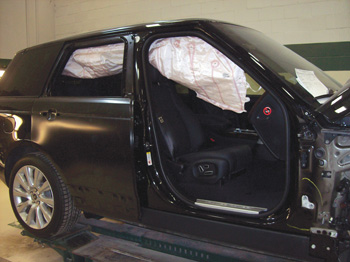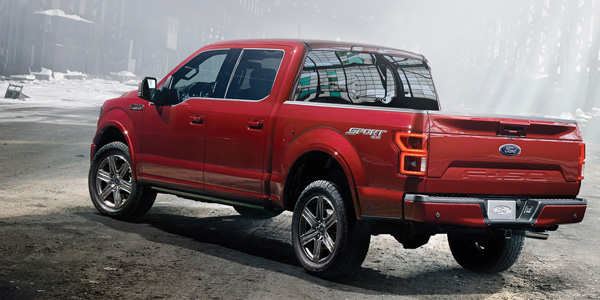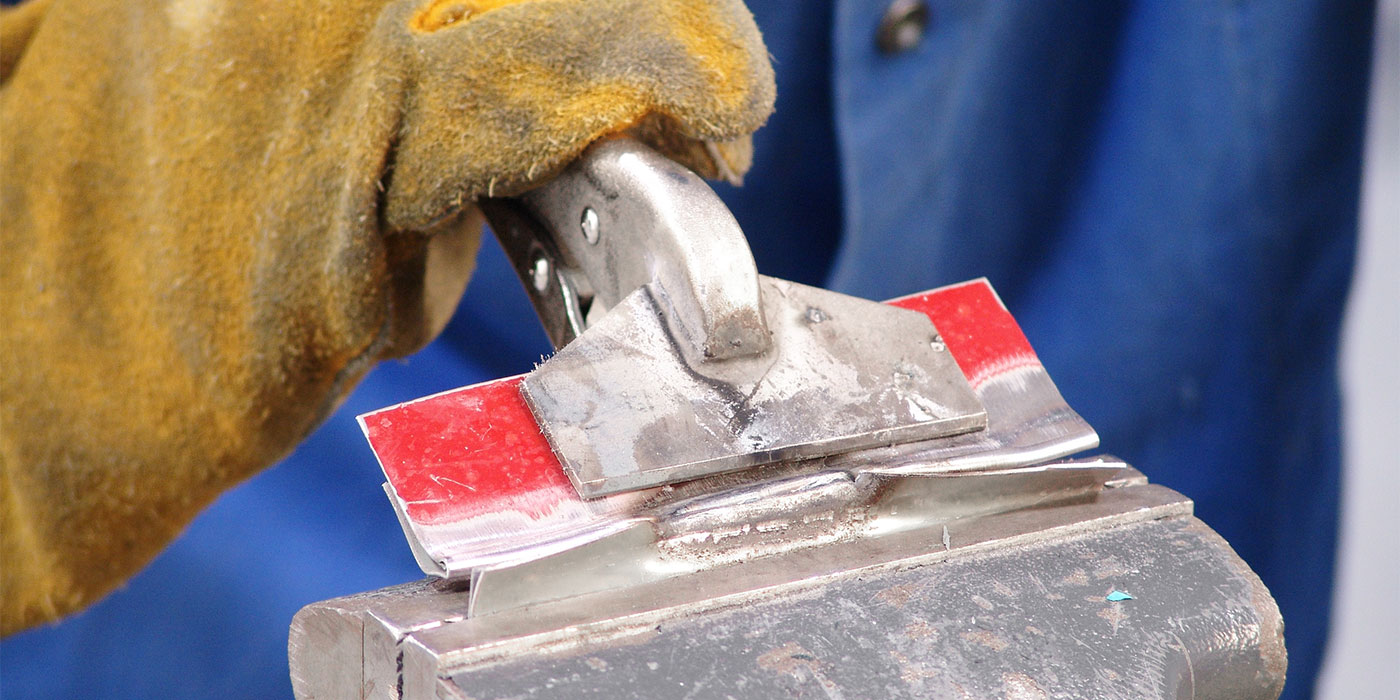 I receive so many calls from people asking, “What equipment do I need for the F-150? How do I MIG braze for the Honda Civics?” First, take a breath and clear your mind. Now, let’s look at what’s happening.
I receive so many calls from people asking, “What equipment do I need for the F-150? How do I MIG braze for the Honda Civics?” First, take a breath and clear your mind. Now, let’s look at what’s happening.
New government standards on Corporate Average Fuel Economy (CAFÉ) and End of Life of Vehicle (ELV) have had a major impact on vehicle manufacturers, who have had to make vehicles more fuel efficient and also safer for new crash testing requirements. They also need lighter materials that are recyclable. This allows vehicles to be lighter and to account for the weight of new electronics to be added. It turns into a serious game of give and take.
This, in turn, changes the repair industry. The new materials automakers chose to use may not be repaired the same as materials we’re used to. The process is called “change.” We may not like it or be comfortable with it, but here it is, and it will continue.
With every change comes learning. Learning what equipment you’ll need to adapt to the change. Learning the skills you’ll need to repair vehicles correctly. Learning what your company and employees will need to know to estimate and plan for repairs. Research and training into the changes become a necessity, not an option.
A Bomb?
Change can be slow, or dropped like a bomb. Years of high-end luxury cars have insulated most shops from having to prepare for mainstream models’ change to aluminum. The requirements to be a certified shop were high and cost prohibitive. Many shops also procrastinated. Now, we’re talking about one of the most popular vehicles in the world going through a major change. It’s time to get on board and accept the inevitable. After all, it’s our responsibility.
It seems that many repairers think the introduction of the new F-150 is like a bomb. It is not. We’ve heard and seen for years the introduction of more aluminum intensive cars and the increase in aluminum panels. We’ve all been working with and on them for years. I find it hard to believe that there is a shop out there that has not worked on an F-150 hood or a similar-in-design vehicle. Also, I believe that many shops ran into the same issue with quarter panel replacements on the new Hondas. The question is, “Did you do it right?” Do you have the capabilities and training for change?
High Strength Steels
Let’s use one example of change. When vehicle manufacturers started using steels that were of incredible strength as compared to the mild steel used in the past, we as an industry had to adapt. Squeeze Type Resistance Spot Welders were brought in, and they were costly, to say the least. Now, ask any technician or shop that made the purchase if they would go back or get rid of their spot welder. Chances are there would be a fight for them. These machines turned into serious moneymakers for shops. The increase in quality and production was amazing. So understand that gearing up for change will have costs associated with it. Being informed is the best way to start preparing.
Let’s look at what you need to start:
- Information
- Equipment
- Training
- Cost
Information is key to starting and knowing what’s coming and where it will go. It can be gathered from many sources. There is a lot of confusion to date on what Ford is doing and requiring or recommending. Honda has also added to the confusion with their new welding requirements and recommendations. Seek out articles in BodyShop Business and get information from dealers.
First, let’s look at Honda and their recommendation to MIG braze on the panels where STRSW can’t reach. I-CAR has an online course that explains MIG brazing and is a great start to gain some knowledge and background on equipment requirements to achieve proper repairs. Amazingly, it’s similar to all requirements for welding aluminum on Ford, GM and others.
Next, take a class on aluminum. I-CAR has the PRA01 course and ALI01 that cover aluminum repairs extensively. Now you have some idea of what you need to do and prepare for.
Welders
Equipment such as welders that are recommended by manufacturers are capable of doing repairs correctly, but just because they offer a name brand does not mean others can’t do the job. Unless you’re aiming to become a manufacturer-certified shop, you can research your options.
Make sure the equipment meets capability requirements. Many vehicle manufacturers are recommending pulse/spray arc welders. These welders have the capability of doing multiple welding tasks on a large variety of metal types such as steel and aluminum, but also can weld on a large variance of gauge or thickness of metal that current welders can’t. These machines can weld a steel frame and exterior panels, and then can be switched to weld aluminum or do MIG brazing. Many have multiple torches pre-loaded for easy switching. The requirements are for 220-volt systems to have all power needed for thin or thick metals and a long duty cycle. The welder purchased will not just be capable of welding vehicles from one vehicle manufacturer or one metal but multiple manufacturers and metals. Check out YouTube for videos by manufacturers on how to use the welders.
I’ve personally seen shops purchase these welders and implement them into their operations. Technicians love them, as the quality of welding and speed is incredible. One shop put up its spool gun welders and 110-volt welders for sale shortly after purchasing the new welders, as technicians did not want to use these anymore. I predict that anyone who gives them a chance will agree that they’re the way to go. I recently acquired one myself and use it for demos, and many people have offered to buy mine on the spot. Teaching technicians to weld aluminum and/or MIG braze is not a difficult task if they understand steel welding.
Also, make sure the welder you have for steel or aluminum can run the proper diameter of wire required by Ford. Many spool guns currently in use may not be able to. Also, check that the 220-volt welder you have is a pulse/spray arc – it’s a major difference. Also, whether you’re using the welder for aluminum or brazing, make sure it’s a MIG welding procedure using 100 percent argon gas.
Specialty Equipment
Specialty equipment for aluminum may need to be evaluated. The F-150 has extensive use of self-piercing rivets (SPR) and adhesive, or SPR bonding, so a self-piercing rivet gun is needed. These tools are expensive, but the plus is that they remove and install SPRs. This gives them more value as there are a lot to work with. They also work with SPRs in other vehicle manufacturers’ vehicles. More vehicle models will be coming, and there are only a few manufacturers of this tool to date. Although other types of rivets and adhesives may be recommended or required, the difference in appearance between different types may be noticeable.
Aluminum dent puller. These are a must for aluminum repairs. Never confuse these with steel dent pullers as large holes will appear in aluminum panels. Although a big expense, you will get a great deal of use out of this tool. Proper use of the tool and knowledge of aluminum repair characteristics will make this a fairly easy-to-learn process. Some similarity to steel is an obvious plus, but the training and purchase of tools designated to aluminum repair only is a wise decision. This does not have to be expensive as we’re referring to hand tools mostly. With air tools, we need to establish best practices to avoid contamination of metals. There are many aluminum repair stations currently on the market.
Work area. This is where there is a lot of confusion. Vehicle manufacturers had rigid requirements to be a qualified shop, one of which was that a separate room or clean room was needed. Although it’s the best way to prevent contamination, it’s costly or impossible for shops to comply. The recommendations of curtain walls or similar is a more cost effective way to achieve a clean room recommendation. The recommendation of air extraction procedures makes some prep decks a viable solution. We’ll soon see some more ideas as the industry gears up. Watching and listening to solutions will be important to minimizing cost.
Understand that all this equipment can and will be recommended and used on other manufacturers’ vehicles; therefore, you’ll get a lot of use out of this equipment for years to come.
Training
Training is an absolute must for shop owners, managers, estimators and technicians. Never before have we seen a change that requires all employees in a body shop to understand the requirements to repair vehicles.
I-CAR has long been a source of training and is one of the best sources for equipment requirements and repair needs. The justification that we all need to be on the same page as an industry will be apparent quickly. Getting your team up to speed will be less of a challenge when all are involved. Vendors and I-CAR have multiple programs available, including the new F-150 course this summer. The NEW14 course has information on Honda and others. The I-CAR online courses offered, such as MIG brazing, are great for learning at all levels.
Paint Procedures
Check with automakers and paint suppliers about the proper procedures for adhesives, seam sealers, primers, body fillers and paint. The ALI01 class from I-CAR also covers this in-depth. Be aware that epoxy primers are required in some instances. I highly recommend that all technicians take the FORD-06 class being offered this summer, which will answer many questions and explain many procedures.
Cost of Change
Cost of change can be a moving target. As new equipment comes on board and becomes competitive, a shop may take the wait-and-see approach. This works as long as a 2013 Honda or new F-150 doesn’t come into your shop. If it does, then what do you do?
I’ve heard some multi-location shops say that maybe shops will specialize in certain makes. It makes sense, but the problem is that other manufacturers will be following suit and recommending the same or similar procedures for repairs. And that will require all shops to be equipped similarly. Will informing a customer that this shop does Honda or that shop does GM vehicles drive them to a shop that can do all vehicles? Consumers don’t know the difference. A shop advertising that it’s trained and equipped to repair all vehicle makes may be more appealing. You also may be limiting your customer base by exclusively aligning with a particular OEM.
Plan to Adapt
I cannot emphasize enough the value in seeking training on new vehicles. The new FFR01 course will discuss frame repairs on new models of trucks and SUVs. The changes do not occur in just the body of the vehicles.
All the aluminum courses offered by I-CAR will give technicians what they need to be aware of and where to find resources to answer their repair questions.
Once we accept that change is here again and will be again soon, we can develop plans to adapt. I was once told, “It’s not the biggest or best company that survives; it’s the one that adapts to change.”
| Evaluate Your Shop
1. Can my shop weld on aluminum? What series? What alloy? What gauge or thickness? How thin? 2. Does my GMAW wire feed welder meet Ford, Honda, GM and others’ requirements for steel? 3. Does my GMAW wire feed welder meet Ford, GM and others’ requirements for aluminum? 4. Does my shop have the capability to MIG braze for new Hondas and older applications such as Toyota? 5. Do my technicians have the proper training to repair the new vehicles? |
Mitch Becker is a technical instructor for ABRA Auto Body & Glass. Contact him at (763) 585-6411 or [email protected].














